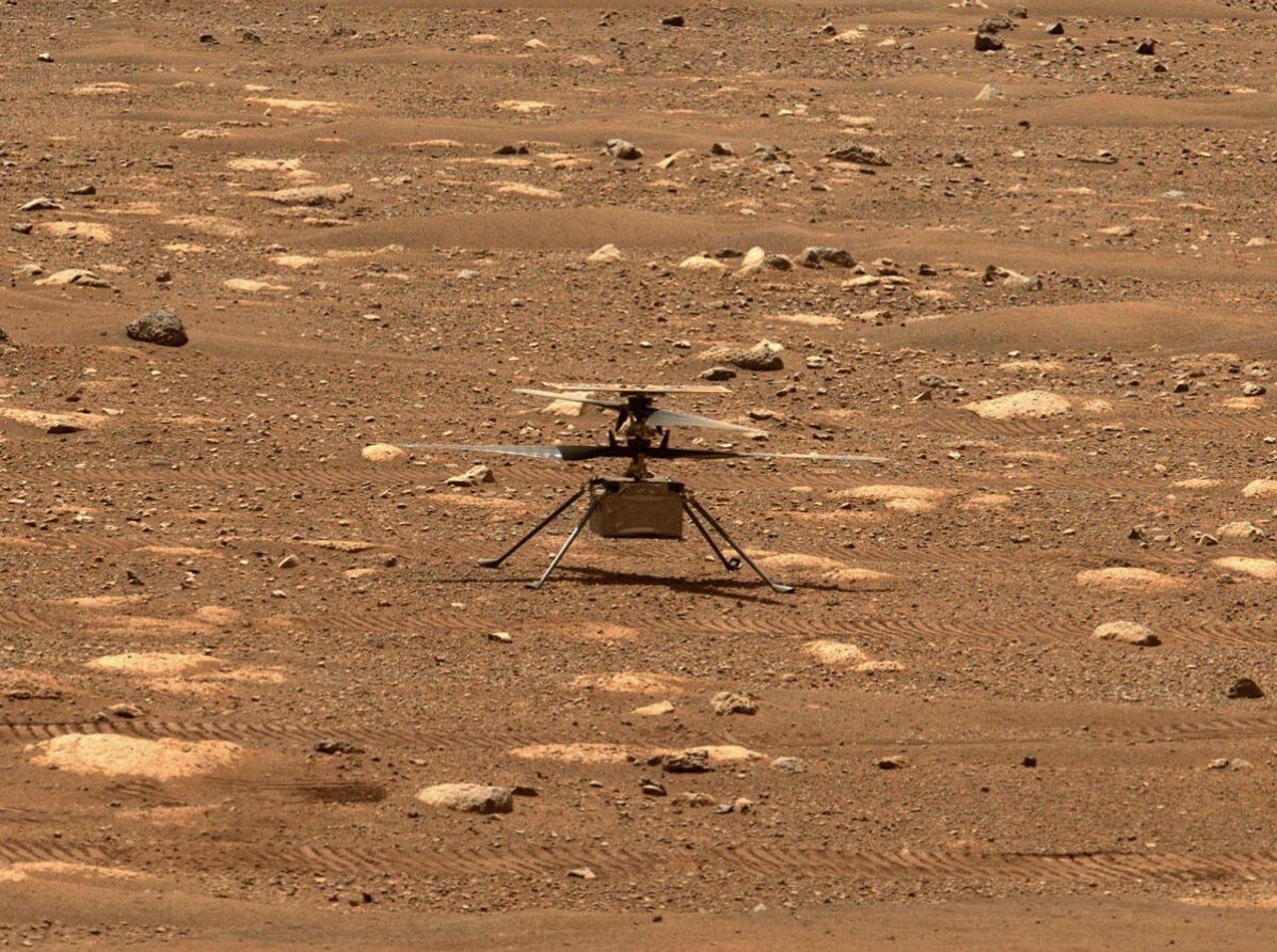
































NASA's Ingenuity helicopter unlocking its rotor blades to fly on Mars.
Image: NASANASA's Perseverance rover collected its first samples from Mars a year ago and they will likely arrive on Earth in 2033 but without the help of Europe's sample-collecting Mars rovers.
NASA launched Perseverance in 2020, trailing the Curiosity rover by nine years, and landed it on the red planet on February 18, 2021 to explore and extract material from Mars' Jezero Crater.
NASA's Ingenuity helicopter took snaps of the landing.
Perseverance collected its first rock samples in September 2021 and these are now inside sealed sample tubes but are stuck on the fourth planet from the Sun. Whether these actually return to Earth is not a given and requires assistance from rovers by NASA and the European Space Agency (ESA).
SEE: NASA's cute space robots just hit another milestone
NASA says it's finished reviewing system requirements for its Mars Sample Return campaign, which now excludes ESA's Airbus-built Sample Fetch Rover and its associated second lander. This decision was made after a meeting between NASA and ESA officials about Mars sample returns earlier this month.
The vehicle to bring Mars samples back to Earth is the Earth Return Orbiter, which NASA plans to launch the in fall of 2027 followed by its Sample Retrieval Lander in summer 2028. NASA released a sketch of the Sample Retrieval Lander in April. The Mars samples are expected to arrive on Earth in 2033, NASA said in a press release.
The changed rover roster means Perseverance will be the main vehicle for bringing samples to the Sample Retrieval Lander.
"The conceptual design phase is when every facet of a mission plan gets put under a microscope," said Thomas Zurbuchen, associate administrator for science at NASA.
"There are some significant and advantageous changes to the plan, which can be directly attributed to Perseverance's recent successes at Jezero and the amazing performance of our Mars helicopter."
SEE: NASA's asteroid mission has been pushed back by software delays
The Sample Retrieval Lander will have two helicopters that collect samples. Their design is based on Ingenuity's helicopter, which has outlived its planned lifespan by a year. The new helicopters are a "secondary capability" for sample retrieval.
Despite the removal of ESA's Sample Fetch Rover from the Mars sample return program, NASA says ESA's Earth Return Orbiter and its NASA-provided Capture, Containment, and Return System "remain vital elements of the program architecture".
NASA plans to enter its year-long preliminary design phase in October, during which time it will create engineering prototypes of core mission components.
For what it's worth, ESA's 22 participating states will "consider the discontinuation of the development of the Sample Fetch Rover" at their next meeting in September, according to NASA.
ESA officials say they remain committed to the its Earth Return Orbiter.
"ESA is continuing at full speed the development of both the Earth Return Orbiter that will make the historic round-trip from Earth to Mars and back again; and the Sample Transfer Arm that will robotically place the sample tubes aboard the Orbiting Sample Container before its launch from the surface of the Red Planet," said David Parker, ESA director of Human and Robotic Exploration.
 Tags chauds:
Innovation et Innovation
l’espace
Tags chauds:
Innovation et Innovation
l’espace